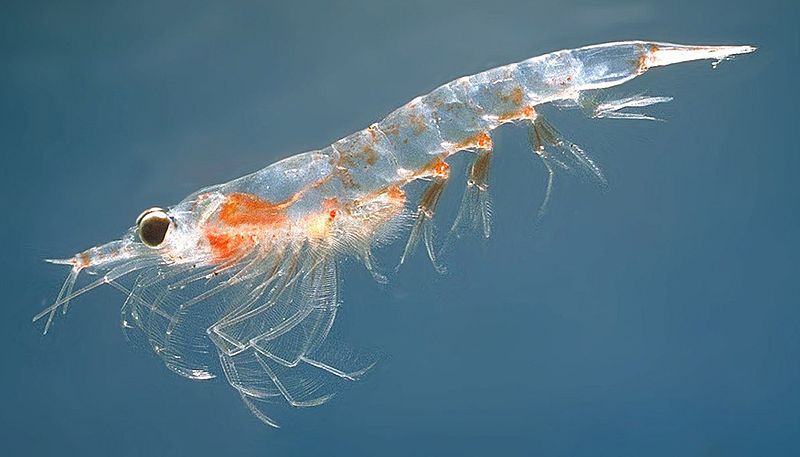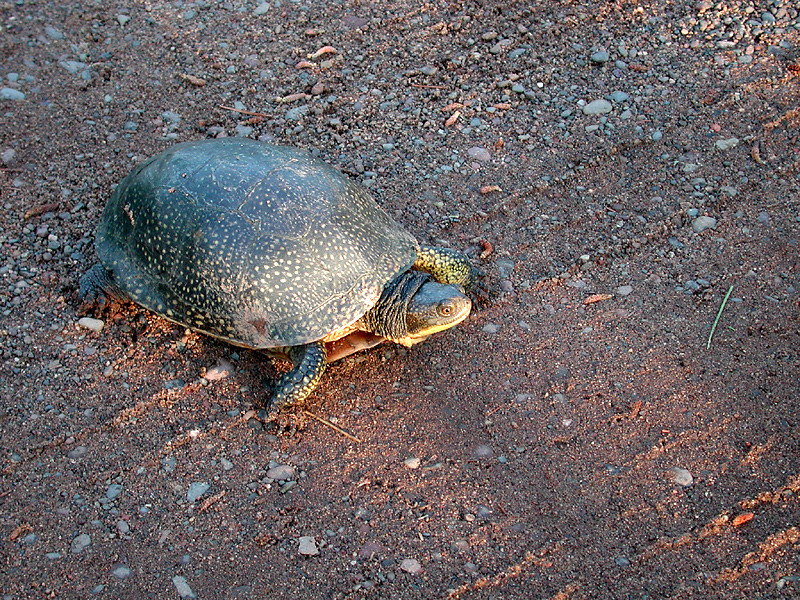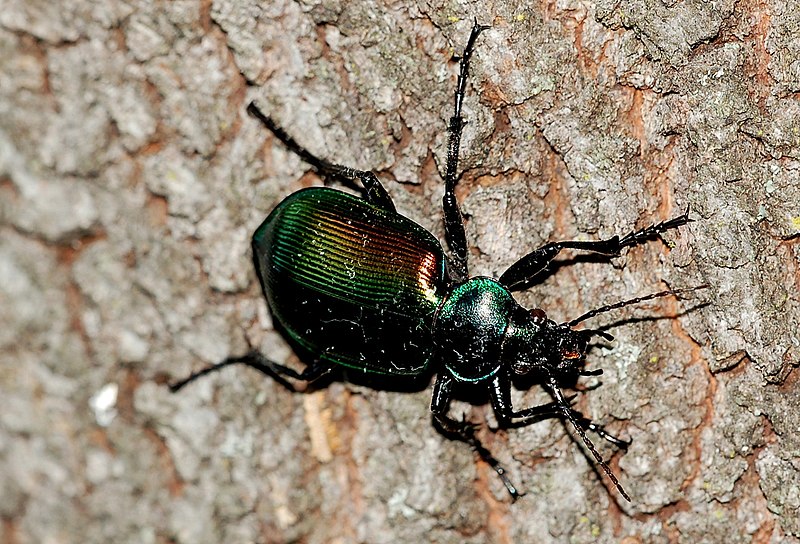Small, shrimp-like marine crustaceans known as krill have long featured prominently in the diets of aquarium fishes. I’d like to relate here some personal experiences that point to their value as food for turtles, tadpoles, newts and salamanders.
Krill as Turtle Food
 Some years ago a herpetologist of my acquaintance, noting that krill were quite high protein and calcium, decided to use this food as a major part of the diet of a group of Blanding’s turtles (Emydoidea blandingii) that had hatched in his collection. The diet he used, simple by current standards, was comprised of 50% freeze-dried krill and 50% Reptomin Food Sticks. The turtles matured into beautiful, healthy adults with hard, well-formed shells…not always an easy task in captivity. I later successfully repeated the experiment with a clutch of Eastern painted turtles (Chrysemys picta).
Some years ago a herpetologist of my acquaintance, noting that krill were quite high protein and calcium, decided to use this food as a major part of the diet of a group of Blanding’s turtles (Emydoidea blandingii) that had hatched in his collection. The diet he used, simple by current standards, was comprised of 50% freeze-dried krill and 50% Reptomin Food Sticks. The turtles matured into beautiful, healthy adults with hard, well-formed shells…not always an easy task in captivity. I later successfully repeated the experiment with a clutch of Eastern painted turtles (Chrysemys picta).
Amphibians
The diet fed to tadpoles greatly influences their survival rate during the stressful period when they transform into frogs. I have found that species typically considered to be herbivorous, such as bullfrog and spring peeper tadpoles, actually fare much better when protein such as krill is included in their diets. Newts, amphiumas, axolotls and African clawed frogs relish krill as well.
Useful Products
We carry a wide variety of freeze dried and frozen krill of various sizes at ThatFishPlace/ThatPetPlace. You will also find krill and shrimp in Reptomin Select-A-Food, Suprema Food Sticks and Gammarus Shrimp Supplement and in Zoo Med Can O’ Shrimp.
The World’s Most Abundant Animal?
 The Antarctic krill, Euphausia superba, may be the planet’s most numerous species…550 million tons of them are swimming in the southern Pacific Ocean at any one time (our own biomass tops out at a mere 110 million tons). Krill form nearly 100% of the diet of certain seals, whales, birds, shrimp, squid and fishes.
The Antarctic krill, Euphausia superba, may be the planet’s most numerous species…550 million tons of them are swimming in the southern Pacific Ocean at any one time (our own biomass tops out at a mere 110 million tons). Krill form nearly 100% of the diet of certain seals, whales, birds, shrimp, squid and fishes.
Further Reading
To learn more about using freshwater shrimps, please see my article Zoo Med Canned Freshwater Shrimp.
Krill image referenced from Wikipedia and originally posted by Saperaud
Blandings Turtle image referenced from Wikipedia and originally posted by Raphael Carter.
 That Reptile Blog – Reptile, Amphibian and Exotic Pet Care and Information
That Reptile Blog – Reptile, Amphibian and Exotic Pet Care and Information

 Native to extreme northeastern Australia, New Guinea, Timor and the Solomon Islands, this striking relative of the White’s treefrog inhabits swamps, rainforests, farms and suburban yards. It is the world’s largest treefrog, reaching a snout-vent length of nearly 6 inches.
Native to extreme northeastern Australia, New Guinea, Timor and the Solomon Islands, this striking relative of the White’s treefrog inhabits swamps, rainforests, farms and suburban yards. It is the world’s largest treefrog, reaching a snout-vent length of nearly 6 inches. Caterpillar hunters exhibit many qualities that render them ideal terrarium subjects. They are large, bold, diurnal, brightly-colored, voracious predators, temperature-hardy and breed well. Despite this, like most US natives, they receive virtually no attention from hobbyists. Caterpillar hunters are, however, much in demand elsewhere – on my last visit to Japan, entomologists at the Tama Zoo (which hosts a huge building and an outdoor exhibit for insects) assured me they would accept all that came their way.
Caterpillar hunters exhibit many qualities that render them ideal terrarium subjects. They are large, bold, diurnal, brightly-colored, voracious predators, temperature-hardy and breed well. Despite this, like most US natives, they receive virtually no attention from hobbyists. Caterpillar hunters are, however, much in demand elsewhere – on my last visit to Japan, entomologists at the Tama Zoo (which hosts a huge building and an outdoor exhibit for insects) assured me they would accept all that came their way. Caterpillar hunters make fascinating terrarium subjects. Clad in beautiful iridescent colors, most are not at all shy about revealing a range of interesting behaviors. They do well at normal room temperatures and can be housed in planted terrariums or simple
Caterpillar hunters make fascinating terrarium subjects. Clad in beautiful iridescent colors, most are not at all shy about revealing a range of interesting behaviors. They do well at normal room temperatures and can be housed in planted terrariums or simple